Creating an Azure connection
Create the connection by using one of the following methods:Using OAuth
This method will not work if your Azure User Type is Guest.Creating your connection
- In the Blink platform, navigate to the Connections page > Add connection. A New Connection dialog box opens displaying icons of external service providers available.
- Select the Azure icon. A dialog box with name of the connection and connection methods appear.
- (Optional) Edit the name of the connection. At a later stage you cannot edit the name.
- Click Azure to authenticate using OAuth.
- Sign in using your credentials.
Need admin approval? please refer to the Need Admin
Approval guide.
Using App Registration
To create the connection you need:- An APP ID
- A client secret
- A subscription ID
Obtaining the credentials
- Log into the Azure Portal.
-
Go to the Microsoft Entra ID resource.
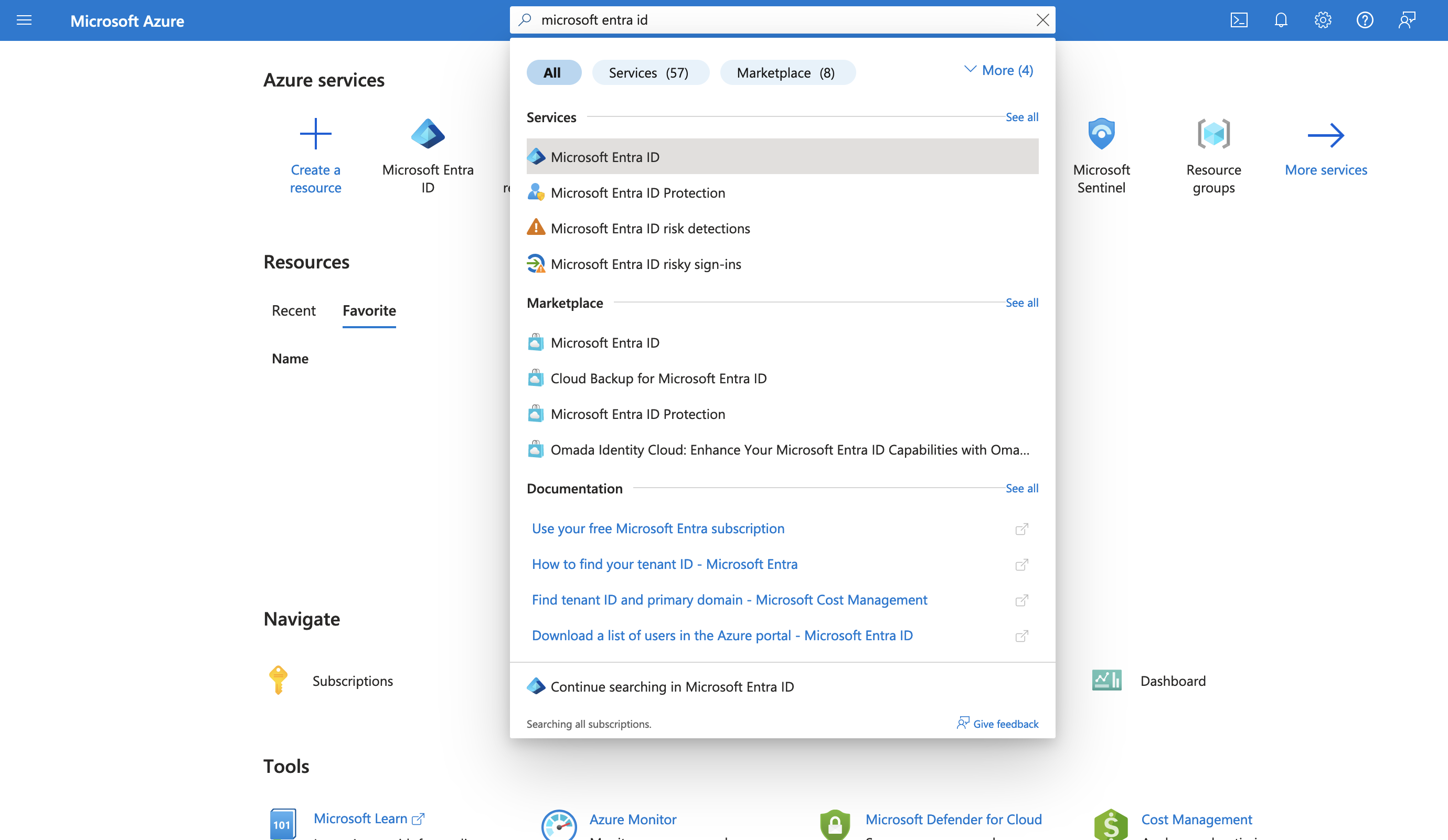
-
In the left-hand menu, click App registrations.
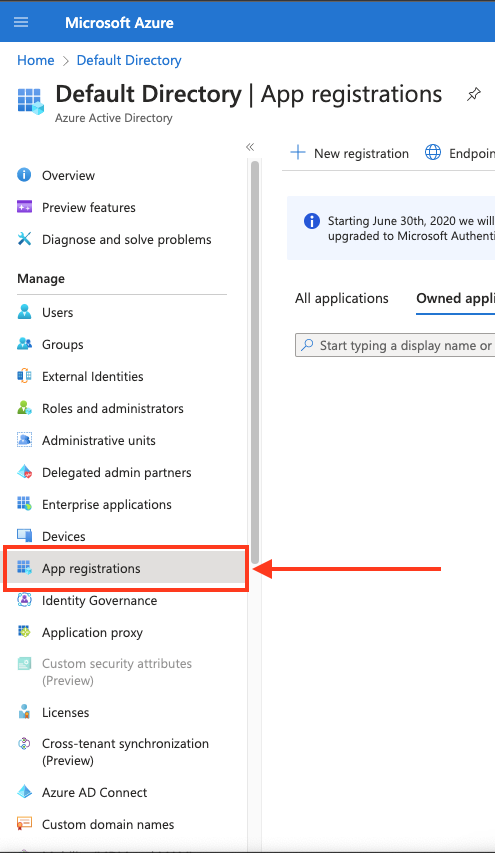
-
Create a new application registration or click on one of your existing applications.
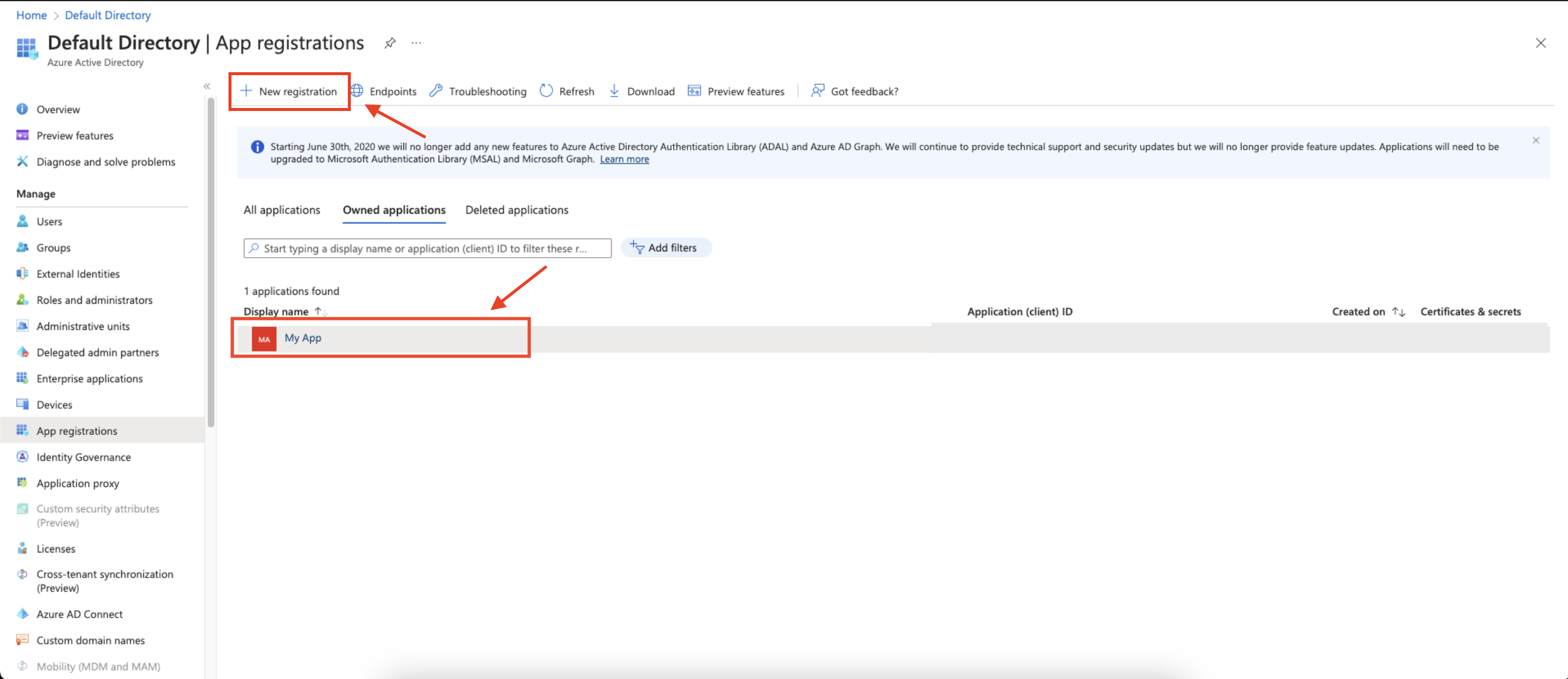
-
Navigate to Overview and Copy your client ID and tenant ID.
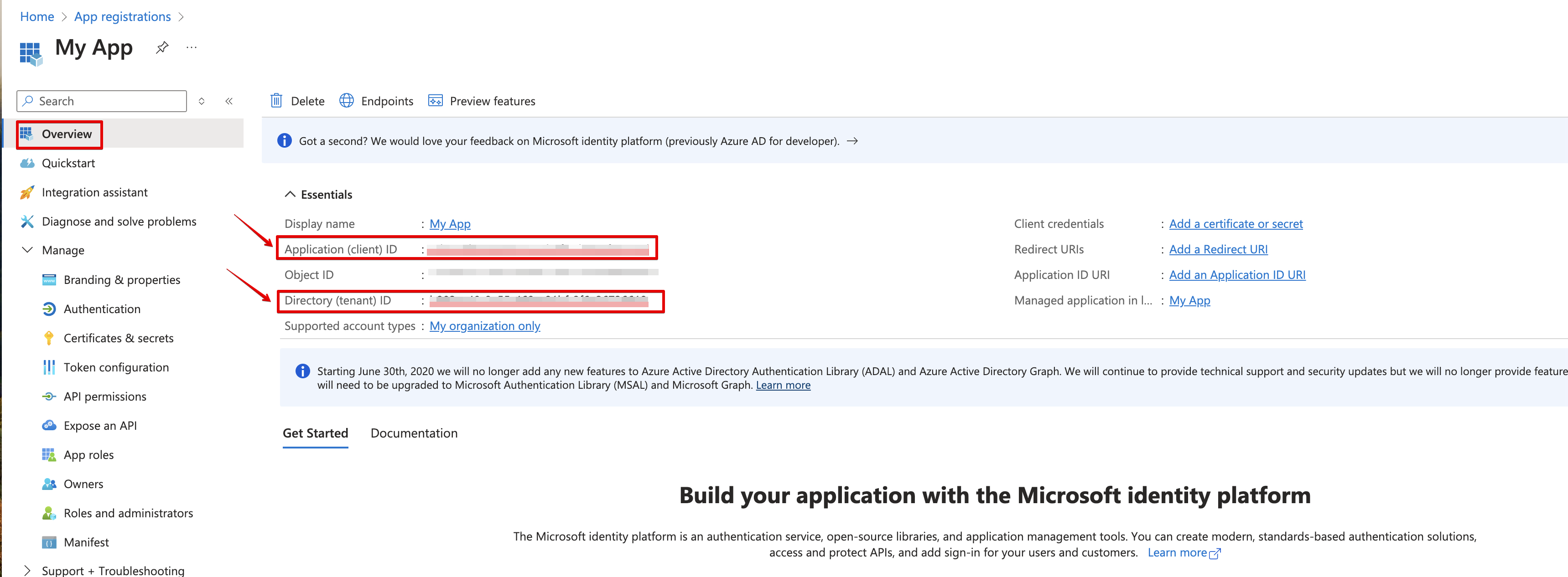
Assign the Reader role to your app registration within your subscription
- Navigate back to Microsoft Azure Portal home.
-
Click Subscriptions.
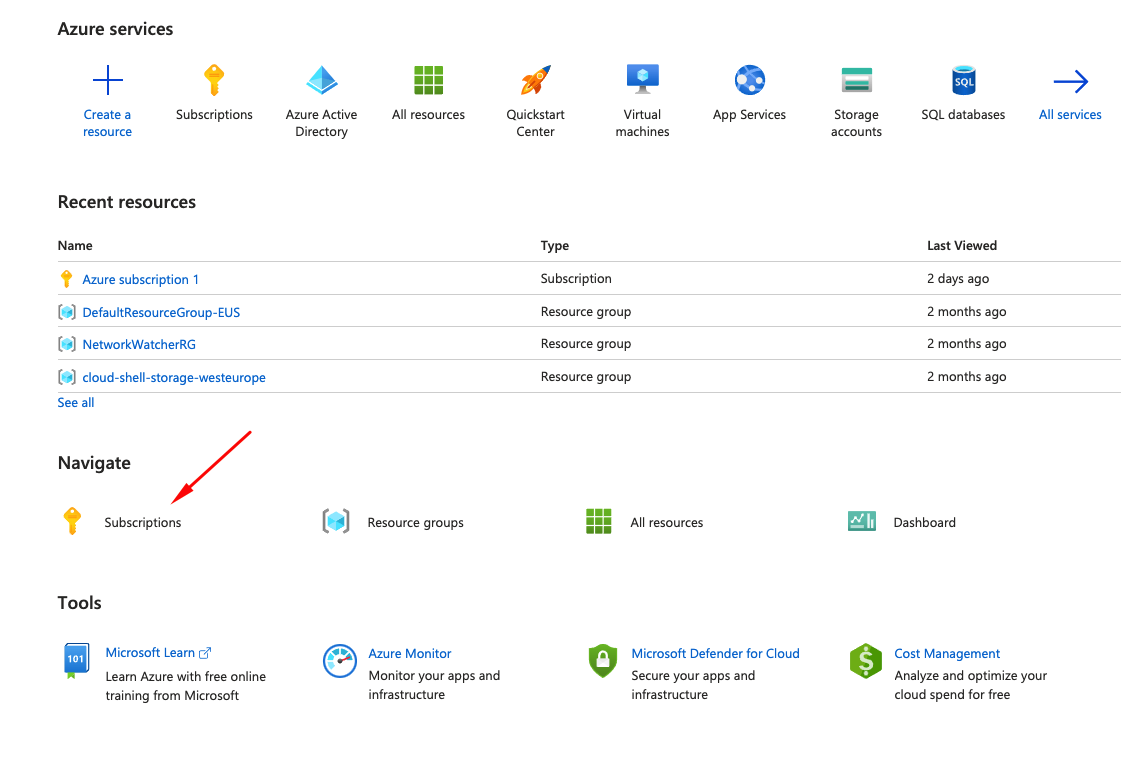
-
Select a subscription to link your app to.
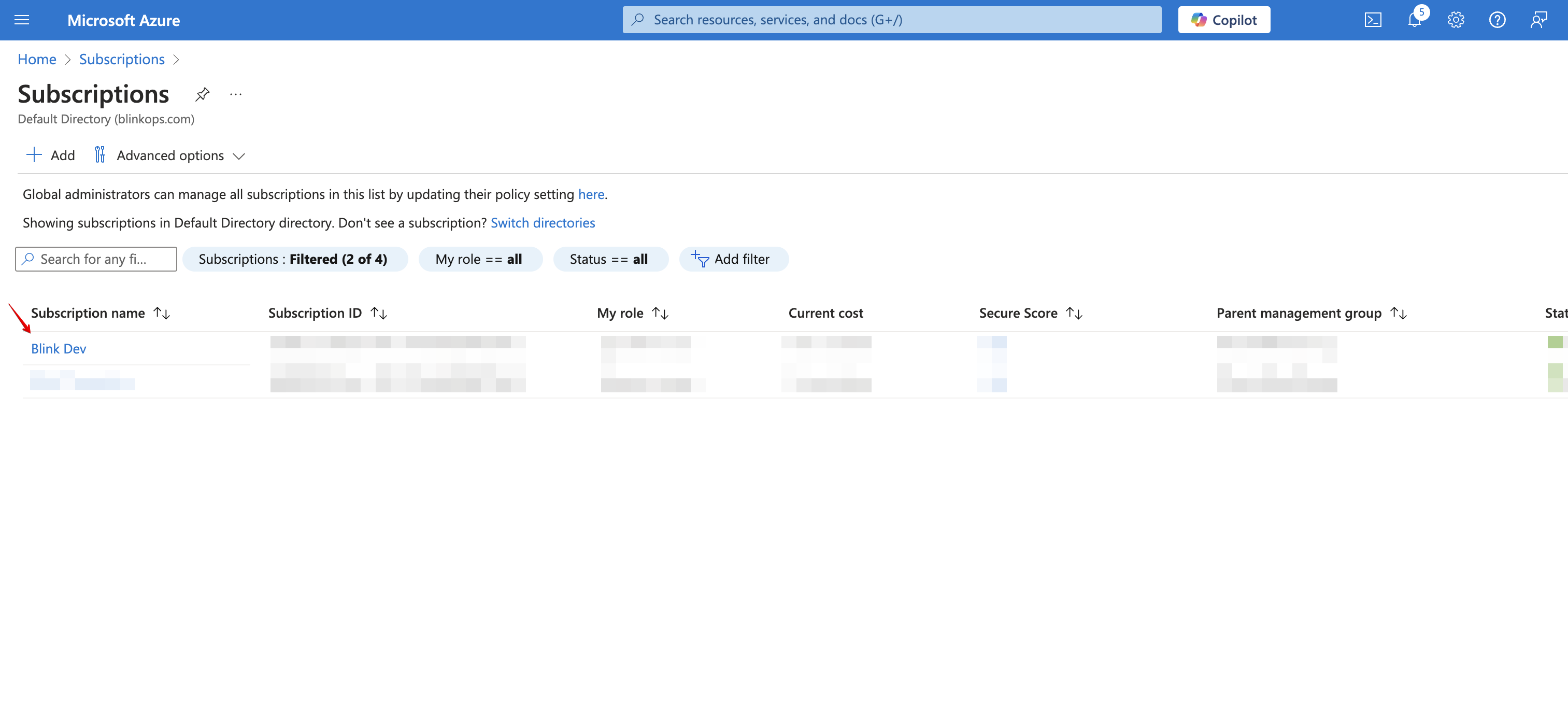
-
Navigate to Access control > Role assignments > Add > Add role assignment.
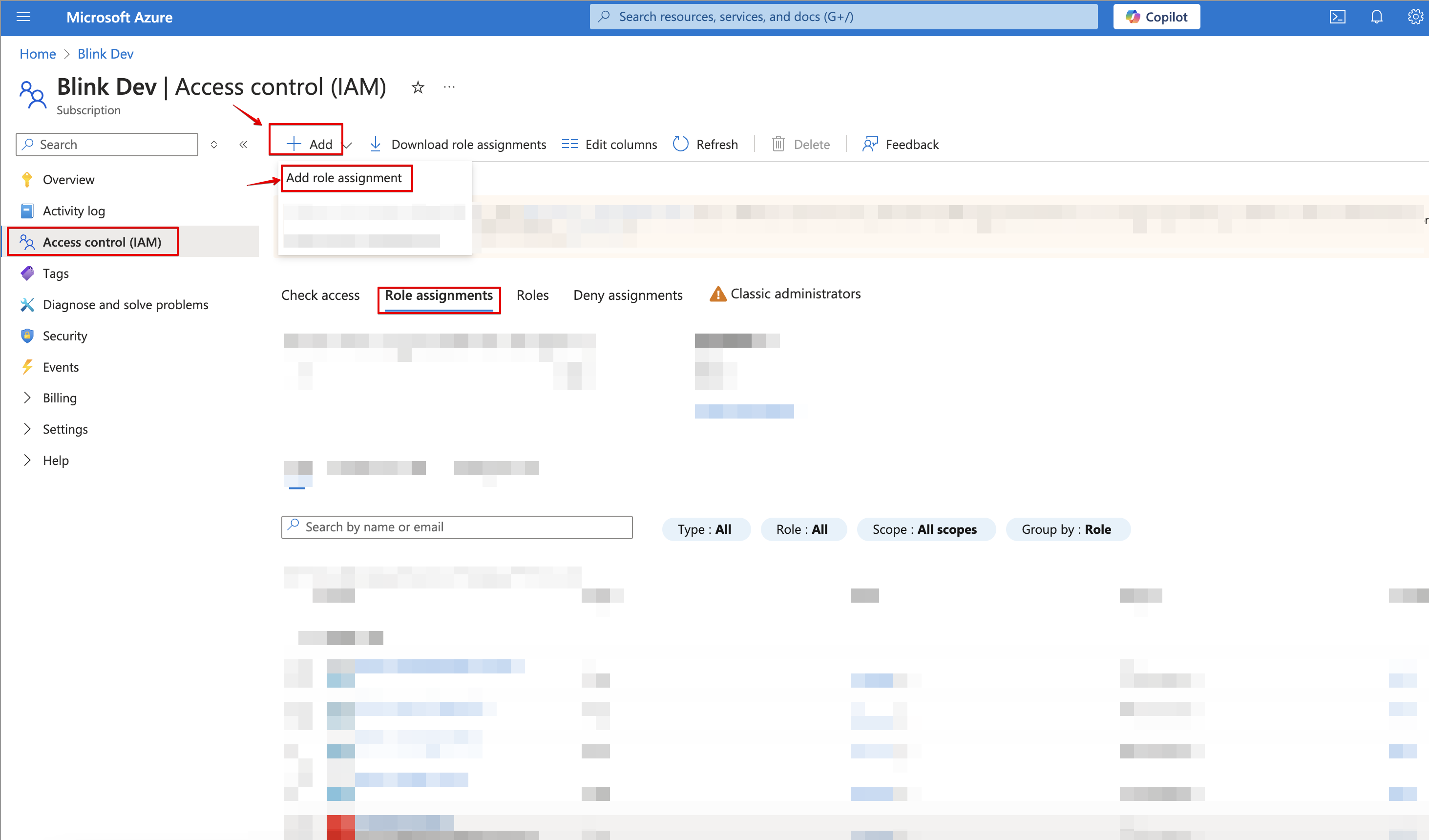
-
Under the Role tab, select the
Readerrole.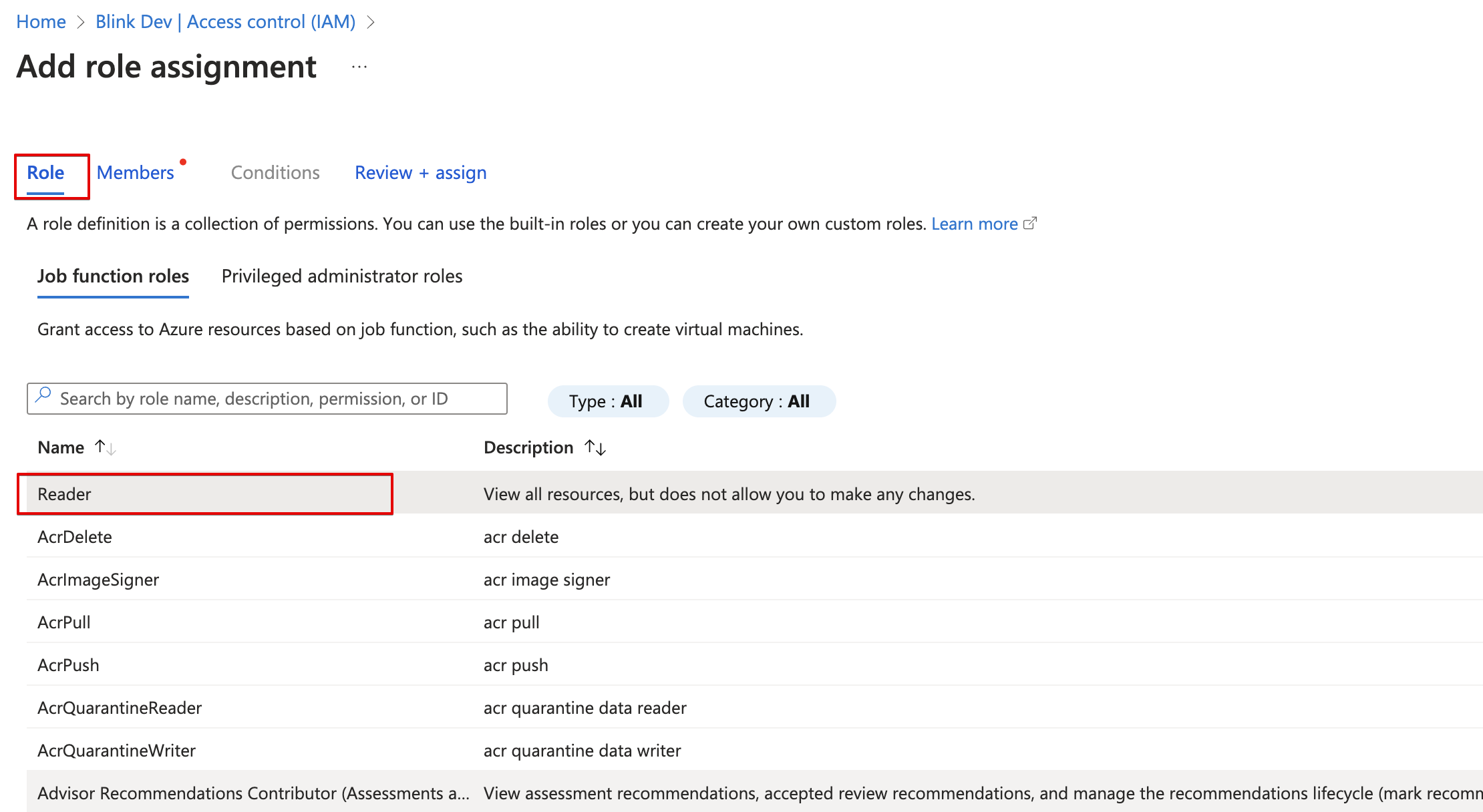
-
Under the Members tab > Assign access to > select User, group, or service principal. Click on Select members, and select your app.
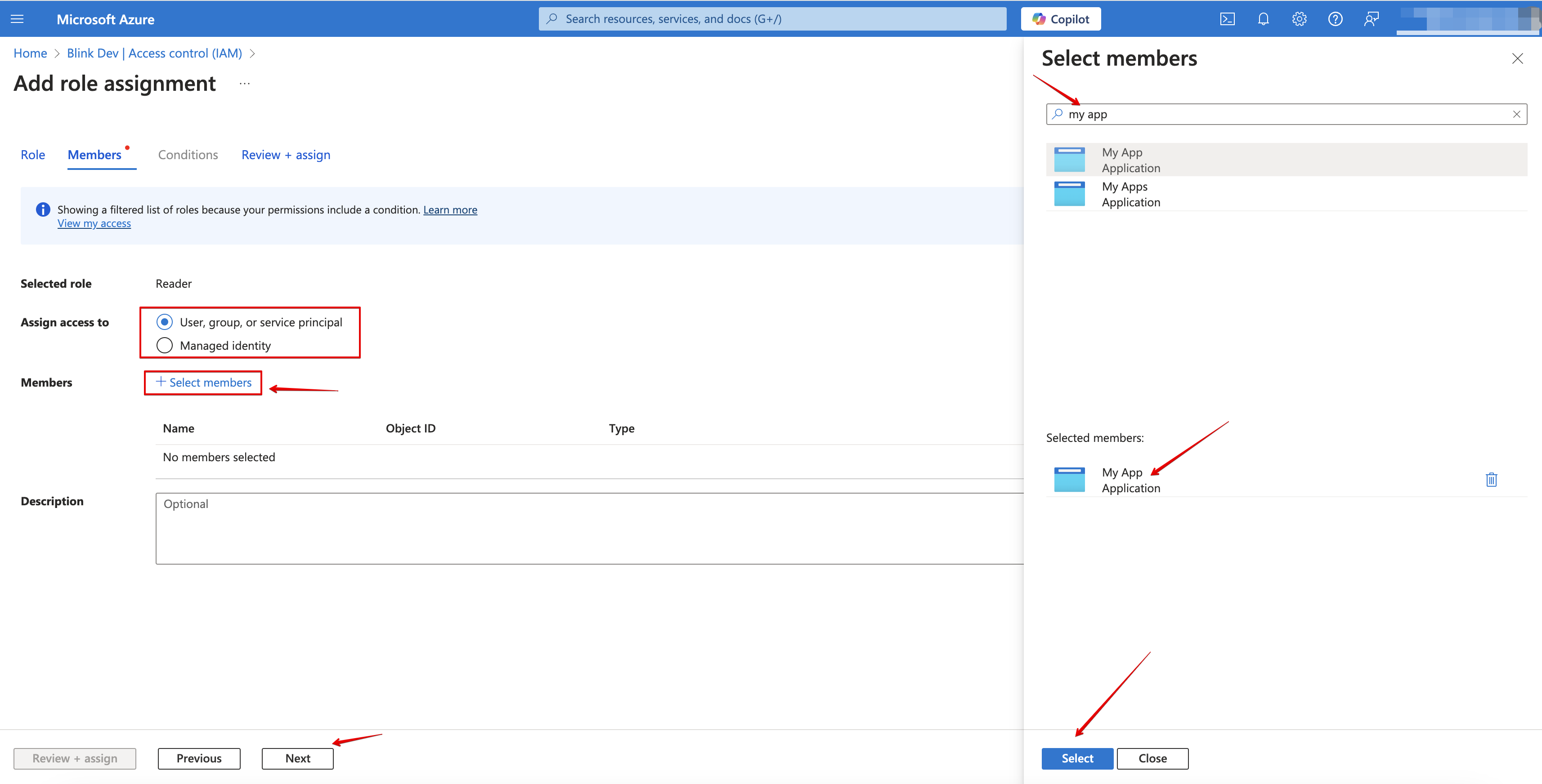
-
Under Review + assign confirm your app has been added and click Review + assign on the bottom left edge.
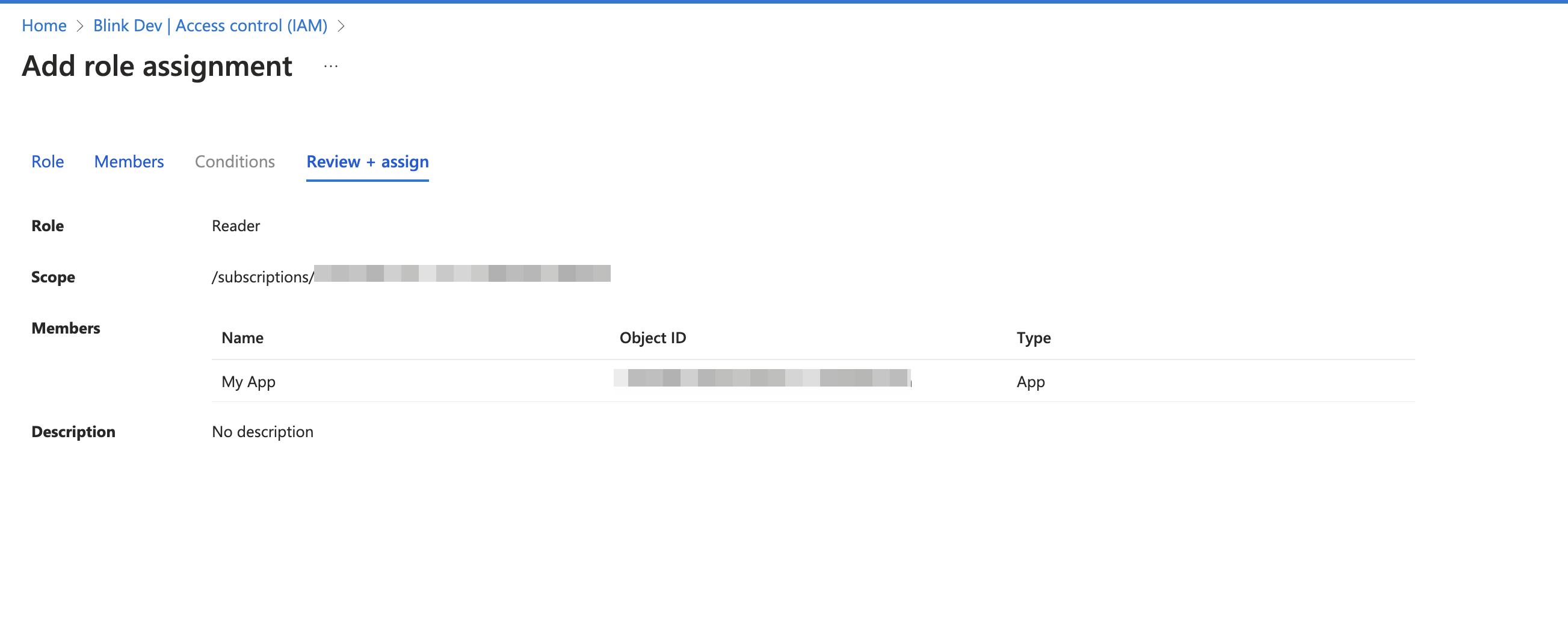
Create and copy a secret
-
Go back to your app’s Overview page, and create a new client secret.
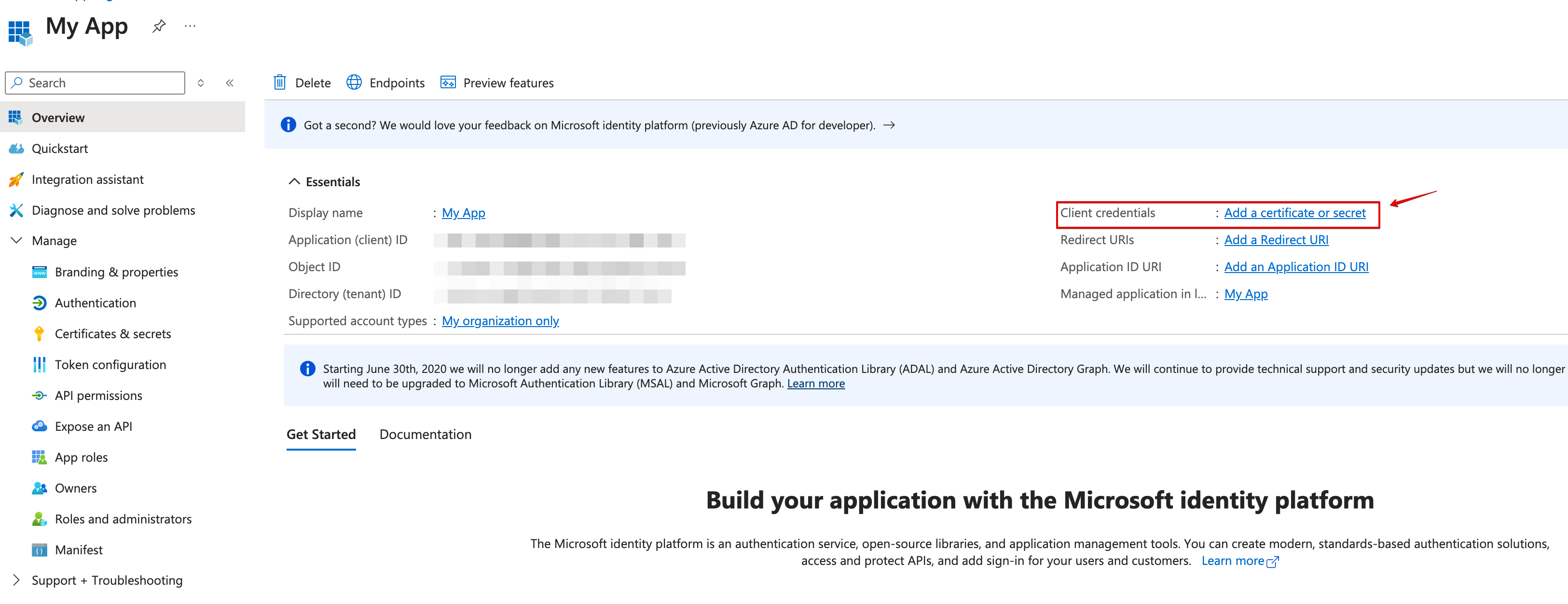
-
Copy the secret value.
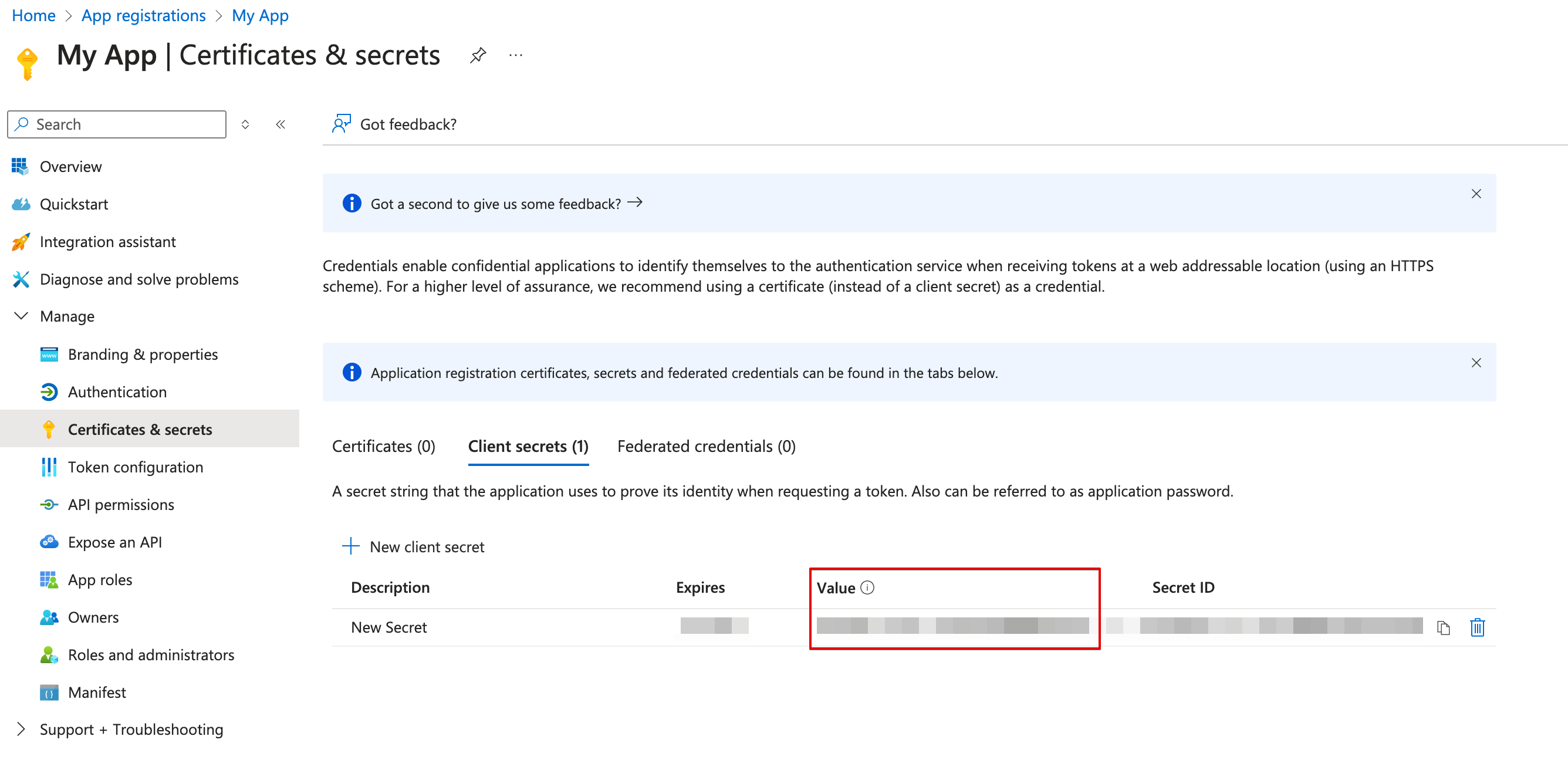
Copy the subscription ID
- Navigate back to Microsoft Azure Portal home.
-
Click Subscriptions.

-
Copy the subscription ID of the subscription you want to use.
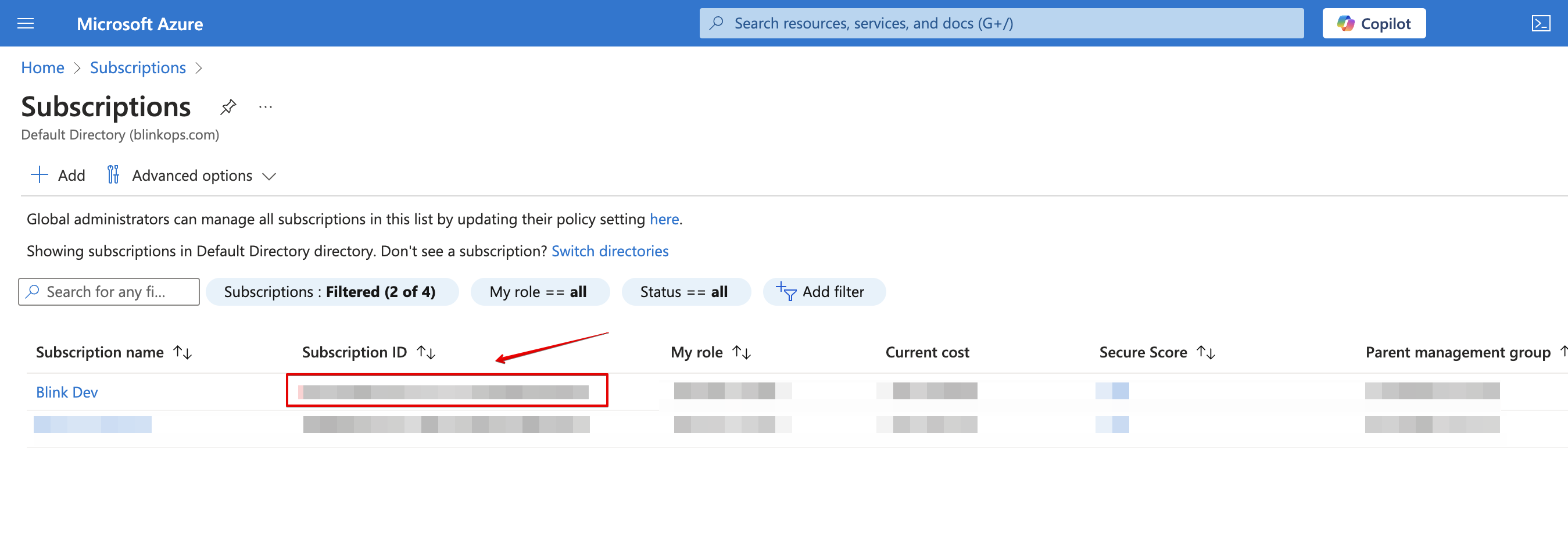
Creating your connection
- In the Blink platform, navigate to the Connections page > Add connection. A New Connection dialog box opens displaying icons of external service providers available.
- Select the Azure icon. A dialog box with name of the connection and connection methods appear.
- (Optional) Edit the name of the connection. At a later stage you cannot edit the name.
- Select App Registration as the method to make the connection.
-
Fill in the parameters:
- The APP ID
- The client secret
- The subscription ID
- (Optional) Click Test Connection to test it.
- Click Create connection. The new connection appears on the Connections page.